I'm looking to power multiple robots off a single 230V mains supply in parallel.
I'm using the Micro Magician V2. I can't find out how many amps it draws anywhere but I know the motors I'm using have a stall current of 760mA so I'd guess around 1A per robot?
I will be using 4 robots with this setup
The Micro Magician states it has a:
Built in LDO +5V, 1A regulator (input voltage must be at least 5.5V) to power external 5V devices
Built in LDO +3.3V, 500mA regulator
Does this mean I can have a power supply grid with any amount of amps and the micro controller will protect the board by limiting the amps? The voltage will be around 6V in this grid once I choose an appropriate transformer.
Once I know what amps the power supply grid will need to produce to handle powering the 4 robots I can then choose a transformer?
Let me know if any of the above statements are wrong, I'm quite new to this.
Thank you!
Edit: if anyone is confused about the "power grid" part, I have prototyped this circuit and it works well: Help with a full bridge three phase rectifier powered floor
